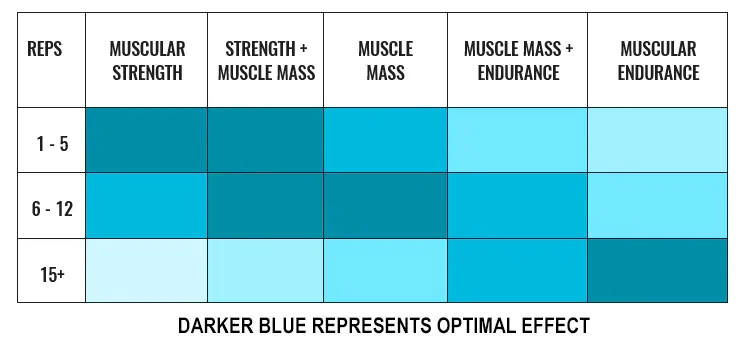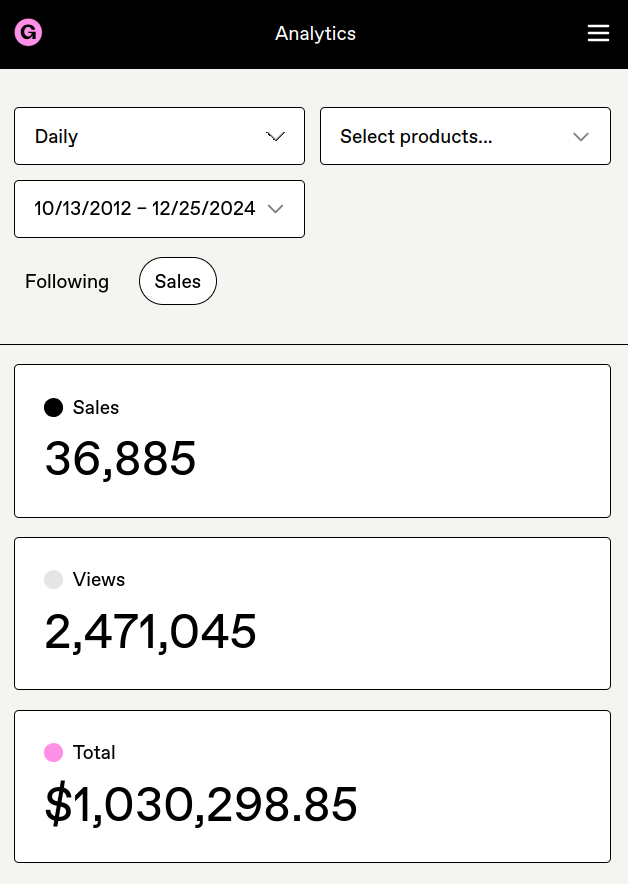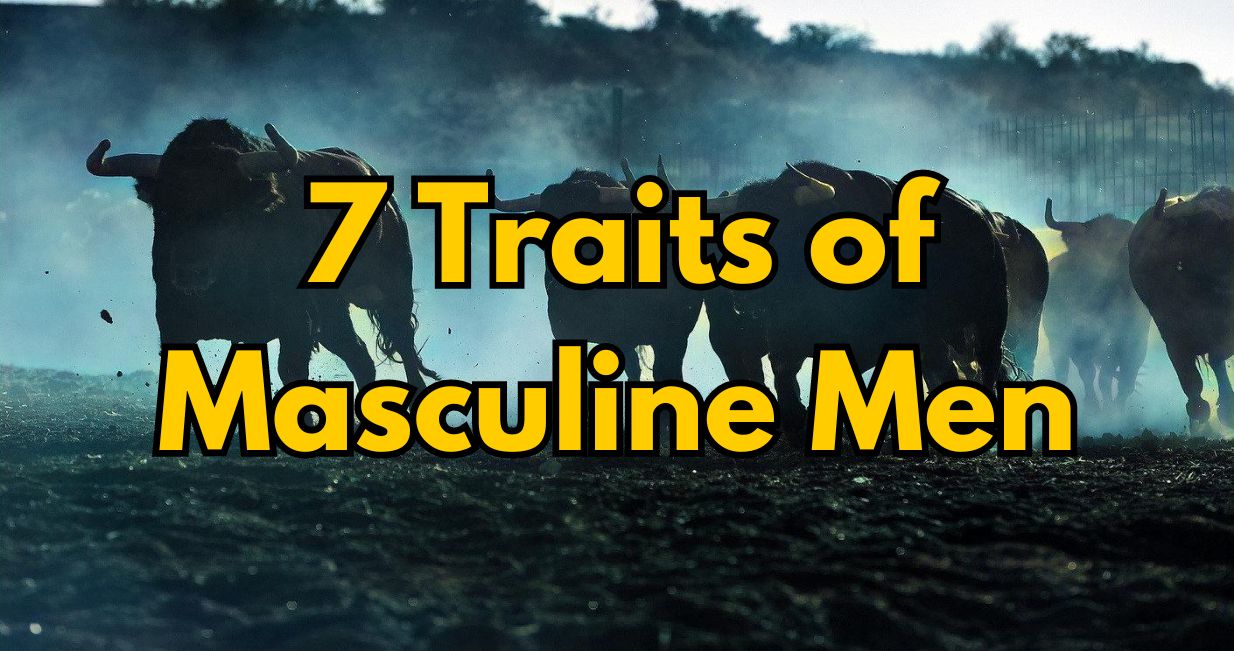From the desk of Harsh Strongman
Subj: Why is digital news mostly outrage?
If you’ve been following me for a while, you’re probably aware of the fact that every once in a while, I get some negative press from heavily left-leaning news websites for my criticisms of feminism.
I don’t usually mind them because it increases my SEO, brings me more readers, and for the simple reason that there’s no such thing as bad publicity.
I find it interesting that these articles are almost always terrible – they’re full of typos. They don’t add any value or information, and they read like a teenager ranting about something. There’s no effort put in by the author and no research done.
This article attempts to dissect why the “journalism industry” has gone down the drain in this way.
Low-Quality Articles (Lazy Content Creation)
These articles are almost always really low-quality pieces that seem to have been published in a rush and haven’t even been proofread for typos, much less researched for fact-checking.
For example, if you take this piece (archive link):
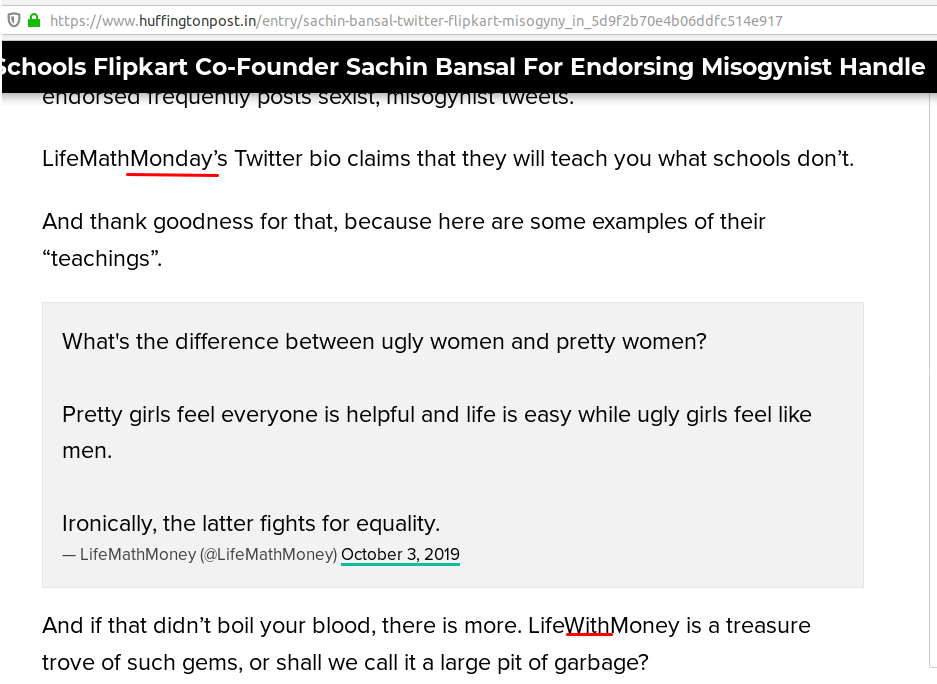
They’re trying to be calling me a “large pit of garbage” but the author can’t even seem to get my name right. First it called me LifeMathMonday, then LifeWithMoney.
It’s clear that the author, who goes by the name of Rohini Chatterji (the “General Assignment Editor” at Huffington Post India / HuffPost), wrote this piece quickly before it became “old news” and never even read it herself.
Here’s another one that couldn’t get my name right:
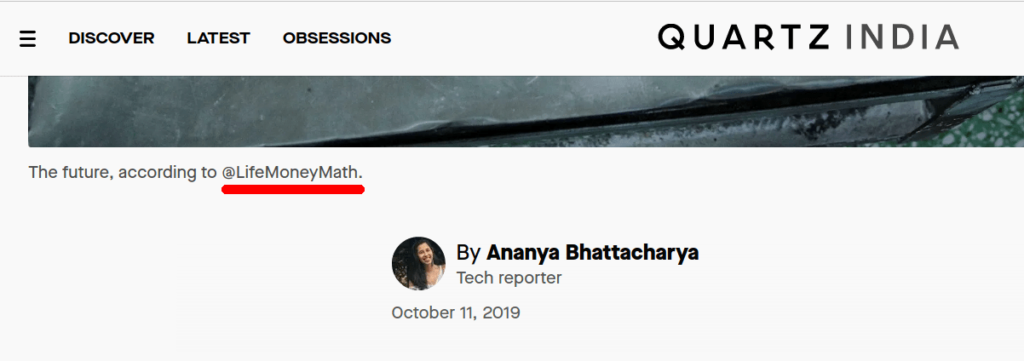
There’s more, but you get the point.
They all follow a lazy type of content creation that goes something like this:
- X said something group Y didn’t like (in my case, group Y is usually feminists)
- X is evil (racist, sexist, misogynist, homophobic, blah blah – you know the drill)
- X was roasted on the internet (which is often not the case, but they selectively pick examples to spice things up)
- Here are some tweets about what X did (always one-sided pickings to make it seem like the entire world is against X and to trigger the herd instinct in people – “They say X is bad, everyone seems to hate X, therefore X is bad and I should hate them too”)
They’re not doing any “journalism”; they’re just a bunch of people sitting in their office, browsing Twitter, and making a hasty write-up of whatever is happening on Twitter.
The Business Model
The business model is straightforward:
- Create outrage: Write a very one-sided article that will make anyone with a functioning brain go “what the”
- Litter the article with ads: This is where the money comes in. There are literally about a dozen ads per page. Most of these websites are almost unreadable without an adblocker or VPN installed.
- Use outrage to go viral: Because these articles are so spicy, people will get triggered and share them on social media and some ad revenue will be made.
- Keep making articles: Since the content is just lazy twitter reporting, it’s going to become “old news” very soon. The only way to keep cash flow steady is to keep writing and publishing all day (more on this below).
 I haven’t even scrolled and I see 3 ads already.
I haven’t even scrolled and I see 3 ads already.
The Problem with the Business Model
1. Low Shelf-Life Per Article
Unlike LMM, which has valuable content that lasts forever (I have articles that are two years old that still get SEO readers and make me money), the content these guys publish isn’t valuable and isn’t something that will last forever.
Their articles are about the outrage of the day, and they probably get 90% of their clicks within 48 hours of publishing. After that time, the article basically “dies”. (I mean, how often do you read last month’s news?)
The problem this creates is that they can’t stop publishing! They have to keep making content to keep the cash flow coming.
They have to become a content mill. If they have nothing to publish, they have to create controversy to publish something, or they’ll stop making money.
They are incentivized to go for quantity, not quality.
After all, it doesn’t matter how good the article is if it’s not going to get any clicks after 2 days. The only thing that matters is how to spice it up enough (especially with the headline) to get as many clicks as possible within the short window of relevance.
2. Online Banner Advertising Doesn’t pay
Banners ads (like Adsense, which most of them use) don’t pay much per view. I know this because I run websites too. This is especially true for websites that get most of their traffic from third world countries.
This basically means that the profitability per article is not a lot unless it gets a lot of clicks.
This feeds into the bad incentives created by the low shelf life problem – they have to publish a LOT and do whatever it takes to get clicks – outrage, misleading headlines, straight-up lying (fake news and false claims!), you name it.
Multiple posts need to be published per day by each editor
Because profitability per article is low, these companies are forced to minimize staff – but they still have to publish a lot of articles to keep cash coming – which leads them to make each of their editors publish multiple posts per day.
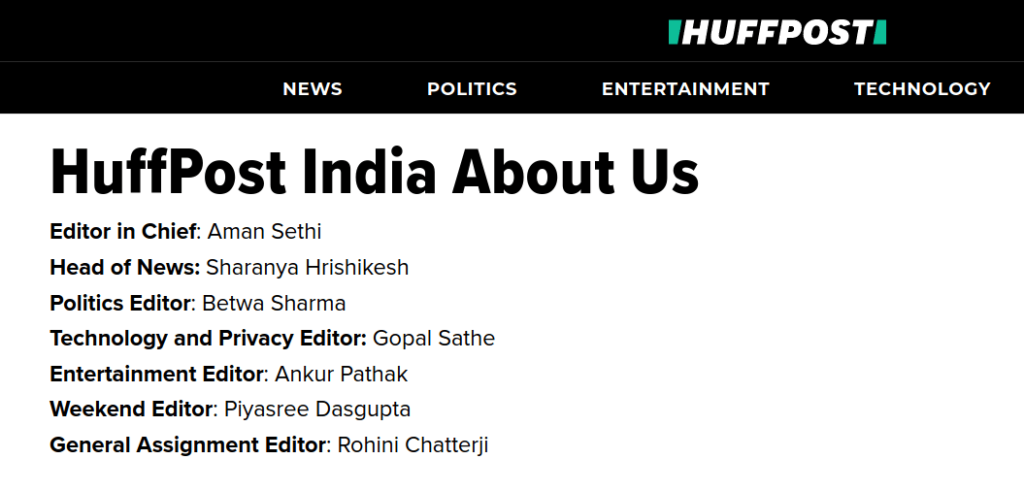 The Huffington Post India apparently had only 7 editorial staff.
The Huffington Post India apparently had only 7 editorial staff.
I checked out the posting history of many of these article mills, and I find that the average editor posts 4 to 6 articles a day.
The volume of content one person is supposed to produce every single day is insane.

Sanya Jain, someone who published a biased piece on Life Math Money, seems to be publishing six times a day!
Anyone who writes knows how insane that number is. Most people struggle to publish 2 times per week! Once a day is considered very high and often unsustainable.
I could do 3 articles a day, maybe once, but the articles would suck, and I’d be really burnt out.
And here these guys are, publishing 6 times a day! And not once, but every single day – for months and years!
If they’re working 8 hours a day, this is less than 1 hour 20 minutes per article, which includes searching for a topic, writing the actual piece, having it approved! 6 times a day, 5 days a week, 50 weeks a year!
It’s no wonder their articles are so thin and riddled with typos! There’s just no time to write quality content and proofread it! Even if they wanted to do it, they couldn’t – because there’s just no time!
(For context, the article you are reading took me over 3 hours to write and 2 hours to edit.)
This is why almost all the pieces are just “X happened and this is what people on Twitter are saying about it” – because this type of content is rapid and easy to produce and doesn’t need any “on the field” work.
The quality sucks because it just can’t be any other way. The articles have typos because they just can’t be any other way.
There’s not enough time and not enough manpower to do it right!
Executive Summary
The staff has to keep producing articles like a factory, no matter what because their articles are about topics that become irrelevant in less than a week, and they must do it fast (firstly, because there are many articles to publish per day, and secondly, they have to do it while the topic is still “hot”).
The average editor makes 4-6 posts per day, which averages to 1 hour 20 minutes to 2 hours per article assuming an 8-hour workday with zero breaks.
This leaves no time or headspace for the author for quality work to be produced, or even the article to be proofread properly.
Further, the incentives are to get as many clicks as possible (and thus ad revenue) which means a lot of fake outrage posts, clickbait, and misleading headlines.
Combine them together and you have the state of the modern digital newsroom, a bunch of morally broken individuals publishing all day and doing everything in their power to get you to click click click!
That’s all for today. Hope this helps.
Your man,
Harsh Strongman
P.S. If you’re looking to build an internet-based business, check out The Art of Twitter. I’ll teach you how to build a Twitter-based business and get to $100/day in about a year without having to become a content mill.










![Traits Women Find Attractive Traits Women Find Attractive (And How to Score Yourself) [PART 1: Physical Aspects]](https://lifemathmoney.b-cdn.net/wp-content/uploads/2025/11/Traits-Women-Find-Attractive-1.jpg)












